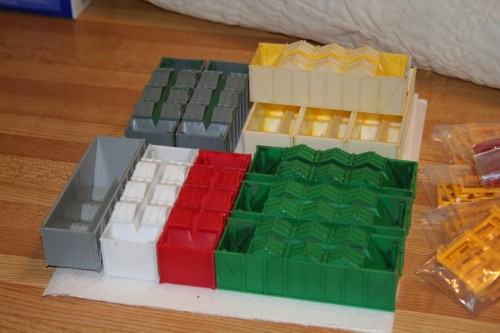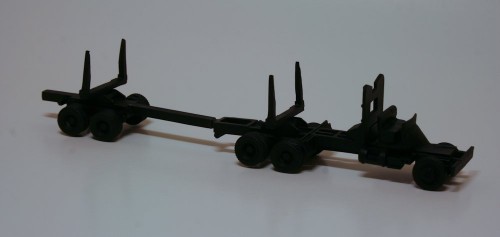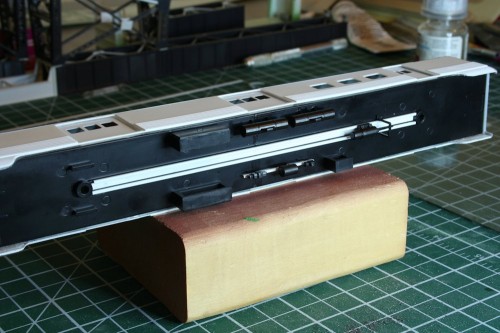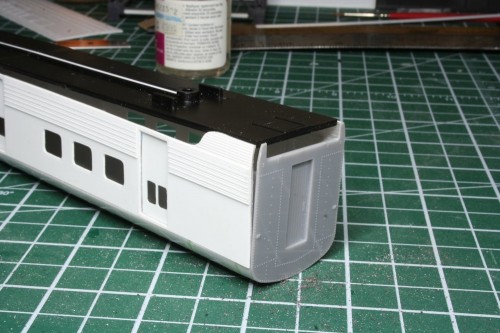No, no, no. Not that kind of alcohol, and not that kind of stripping.
I spent some time tonight disassembling and stripping the paint off of some Walthers hopper kits to prepare them for detailing.
Yesterday these dozen cars were in such varied paint schemes as Conrail, FEC, William Bros./Blue Circle Cement, and even WC/AC. It’s interesting how underneath the paint the cars were also cast in varying colours of plastic.
A bath of 90% rubbing alcohol from the drugstore attacked the paint and lettering quite nicely – in less than five minutes the lettering was literally floating off of the yellow cars. Most of the paint came off quite easily by scrubbing with an old tootbrush, although it took a little elbow grease to get most of the paint out of the corners.





